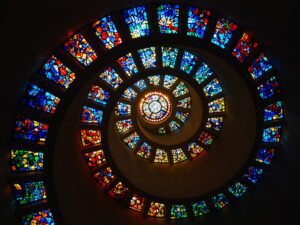Buddhism
This section explains the various ways the Beatific Vision has been shown, depicted and described across the centuries within the religion of Buddhism.
Beginning here and throughout the next several what could be termed exotic religions for the Westerner, or the religions of the Asian-Indian continent, a great problem will emerge that should simply be stated here, again, so as not to offend anybody from these religions or cultures based on my own ignorance but also so that they understand why such things are difficult for the Westerner to sometimes wrap their head around even in today’s plurally accessible world.
I will use the common scholarly term to explain what I’m getting at and it’s the idea, reality, eventuality that has been promulgated by the ancient trade routes, the current and ever expanding global trade routes along with instant access to communication, conquest and the expansion of one civilization or empire into the next and the repeating of this time after time, one neighbor to the next, year after year, century after century across the millennia, or the concept of Syncretism, or the blending of religious spiritual ideas within each religion but especially in this discussion within the context of the Asian continent religions.
This obviously occurs in other areas from one culture or people to another culture or people beyond just religion, spirituality, or the ideas inherent or embedded or behind each of them. But if we look at the base level of what this concept of syncretism attempts to denote, it is that elements of one culture shared with other cultures and that culture may adopt an element of this culture, if it makes sense, and then in the reverse: this culture or people may have or think something that culture over there has or thinks and adopt said element. And this occurs, has occurred, will probably occur until the end of humanity. It is inevitable. Sometimes it sucks in some regards since it makes maintaining one’s unique cultural and religious identity difficult, especially in today’s rapidly changing world, but it is also how in the Biblical sense we learn to love our neighbors.
I know there are many emotions that this can create on a per individual basis or on a per individual religion or sect of a religion if and when one looks back in time and attempts to make sense of such things to get a more accurate picture of the present state of things within one’s own religion and or historical thought. And this is not always easy. I think I mentioned I’m studying or re-studying emergent Christianity but I’ve now gone back further into the Mediterranean world of religions as a whole, and it is very eye opening to say the least. Not that I hadn’t had a sense of these types of things prior in my love and study of Classical Mythology but I’m simply diving in deeper since once the mysteries of those myths started to make mystical sense beyond just fun storytelling, I’ve been drawn back to that time period since that’s just what I do. . .


